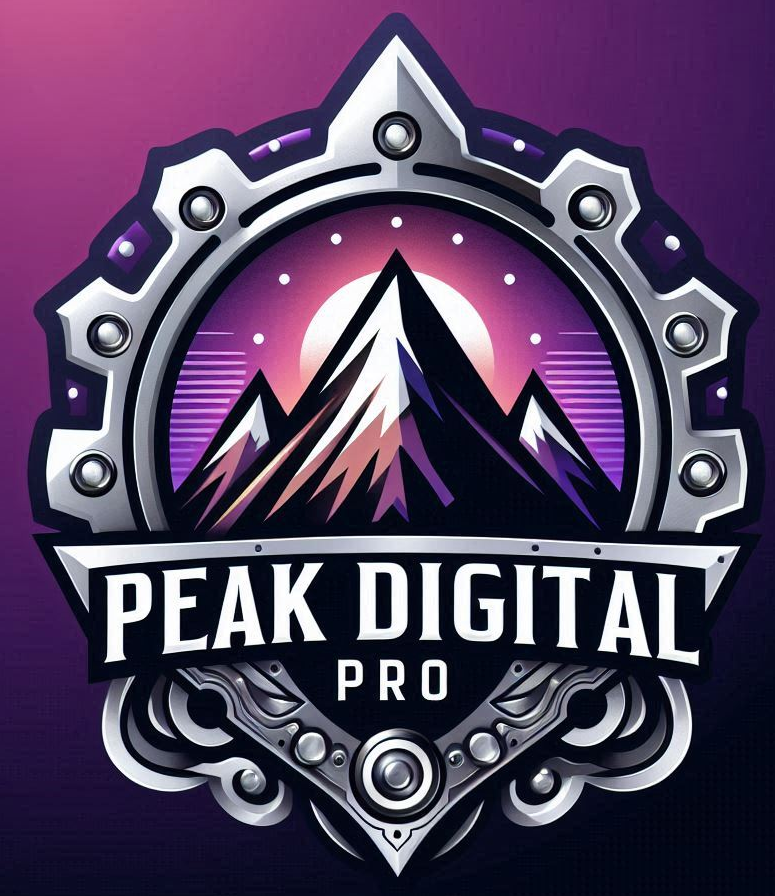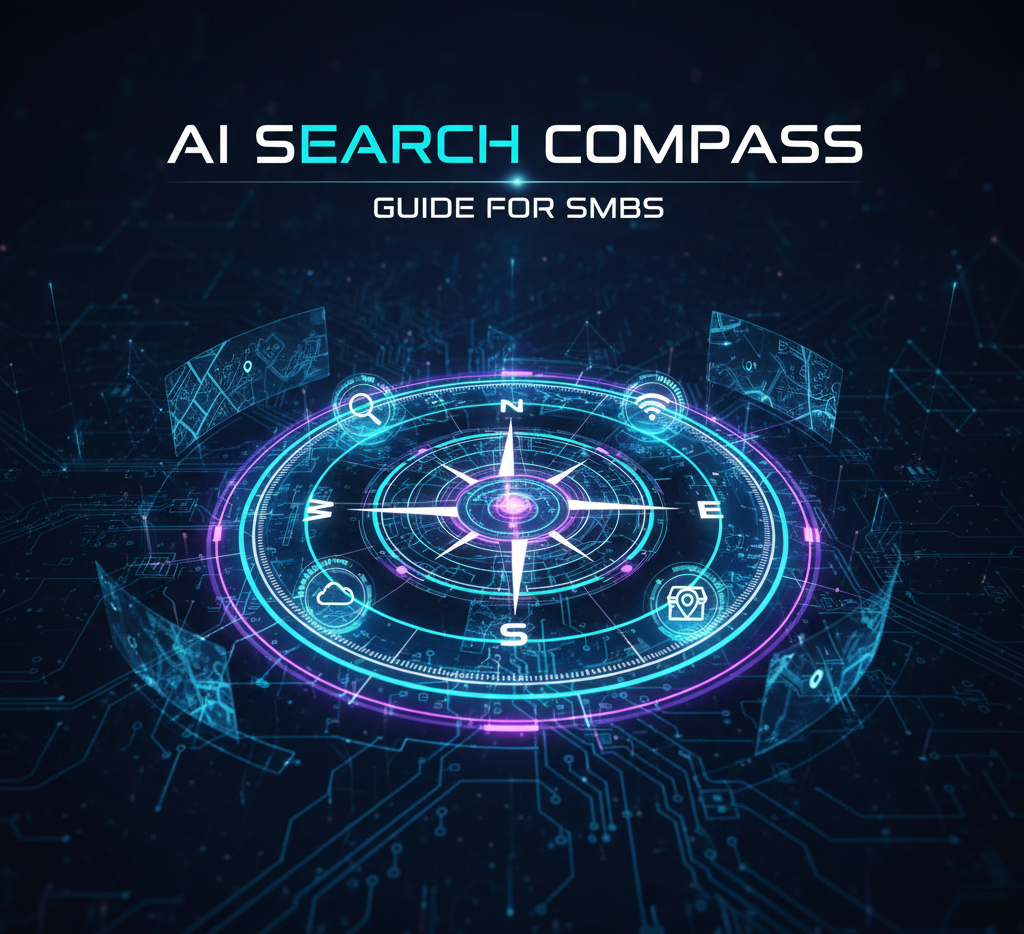How to Plan Campaigns for Business Growth in 2025
Building a marketing campaign might seem all about creative ideas and flashy ads. Yet check this out. Integrated strategies using multiple touchpoints can outperform single-channel efforts by up to 300 percent . The real difference often comes down to precision goal setting and smart execution instead of just eye-catching content.
Below is an overview table summarizing each main step for planning a campaign, including its purpose and the key outcome you should aim to achieve.
| Step | Purpose | Key Outcome |
|---|---|---|
| Define Campaign Objectives | Align goals with business strategy using SMART framework | Clear, measurable objectives that guide the campaign |
| Identify Target Audience | Understand audience demographics, behavior, and pain points | Detailed, actionable customer personas for targeting |
| Develop Campaign Strategy | Integrate channels, messaging, and tactics for maximum impact | Cohesive strategy that leverages appropriate platforms and value propositions |
| Create Detailed Action Plan | Outline tasks, assign responsibilities, and allocate resources | Structured roadmap with timelines and accountability |
| Execute Campaign | Implement the plan with real-time adjustments and monitoring | Synchronized execution that adapts to data and feedback |
| Measure and Analyze Performance | Track metrics and extract insights for optimization | Performance reports that inform future campaigns |
Table of Contents
Quick Summary
| Key Point | Explanation |
|---|---|
| 1. Set Clear Campaign Objectives | Define SMART objectives that align with business goals to guide your marketing strategies. |
| 2. Understand Your Target Audience | Build detailed customer personas to tailor your marketing efforts effectively and engage your audience. |
| 3. Develop a Cohesive Campaign Strategy | Create an integrated strategy that connects multiple channels, ensuring consistent messaging and clear value propositions. |
| 4. Create an Actionable Plan | Break down strategic objectives into specific tasks with clear timelines and accountability measures for effective execution. |
| 5. Measure Performance Continuously | Use advanced analytics to track meaningful metrics and adapt strategies based on campaign effectiveness and customer feedback. |
Step 1: Define Your Campaign Objectives
Successful campaigns start with crystal-clear objectives that transform vague aspirations into strategic roadmaps. Defining campaign objectives is more than just setting goals – it’s about creating a precise blueprint that aligns your business growth strategies with measurable outcomes. Strategic objective setting determines the entire trajectory of your marketing efforts .
Begin by conducting a comprehensive assessment of your current business situation. What specific challenges are you trying to solve? Are you looking to increase brand awareness, generate more qualified leads, boost online sales, or expand into new market segments? Each objective requires a different approach and set of tactics.
According to research from OpenStax , effective objectives should follow the SMART framework – Specific, Measurable, Achievable, Relevant, and Time-bound. For instance, instead of saying “increase sales,” a SMART objective would be “Generate 25% more qualified leads from digital channels within the next six months by implementing targeted AI-powered marketing strategies.”
Your objectives must connect directly to your broader business strategy. Consider metrics that genuinely reflect business growth – not just vanity numbers. Meaningful metrics might include customer acquisition cost, conversion rates, average order value, or customer lifetime value . These indicators provide a more nuanced understanding of your campaign’s real impact.
To validate your objectives, ask yourself critical questions: Can these goals be realistically achieved with your current resources? Do they align with your team’s capabilities? Read more about strategic marketing delegation to ensure you have the right support structure in place. Each objective should have clear key performance indicators (KPIs) that allow you to track progress and make data-driven adjustments throughout your campaign.
Remember that flexibility is key. While your objectives should be precise, they must also allow room for adaptation as market conditions evolve. The most successful campaigns maintain a balance between strategic focus and responsive agility.
Step 2: Identify Your Target Audience
Target audience identification transforms generic marketing strategies into precision-driven campaigns that speak directly to the right people.
This critical step goes beyond basic demographics – it’s about understanding the complex psychological and behavioral patterns that drive customer decisions. Your campaign’s success hinges on how deeply you comprehend your potential customers .
Start by gathering comprehensive data about your ideal customer. This involves analyzing existing customer profiles, examining purchasing behaviors, and investigating the specific pain points your product or service resolves. According to research from the Duquesne University Small Business Development Center , effective audience identification requires a multifaceted approach that combines demographic, geographic, and psychographic information.
Utilize both quantitative and qualitative research methods to build a robust audience profile. Digital tools like Google Analytics, social media insights, and customer survey platforms can provide rich data about your audience’s characteristics. Pay special attention to behavioral indicators such as online browsing patterns, purchase history, and engagement metrics . These insights reveal more about your audience than basic demographic information ever could.
Create detailed customer personas that go beyond surface-level descriptions. Each persona should represent a segment of your target audience, including their motivations, challenges, preferred communication channels, and potential objections to your product or service. Learn more about strategic marketing delegation to ensure you have the right team supporting this deep audience research.
Dynamic audience identification is an ongoing process. Markets evolve, and so do customer preferences. Regularly update your audience profiles by conducting periodic market research, monitoring industry trends, and staying attuned to shifts in customer behavior. The most successful campaigns maintain a fluid understanding of their target audience, allowing for rapid adaptation and precision targeting.
To verify the effectiveness of your audience identification, assess whether your personas feel authentic and actionable. Can you clearly articulate each segment’s unique needs? Do your marketing messages resonate with these defined groups? The ultimate test is whether your campaign can create meaningful connections that drive engagement and conversion.
Step 3: Develop Your Campaign Strategy
Developing a campaign strategy transforms your objectives and audience insights into a powerful, actionable plan. Your strategy is the bridge between understanding your market and executing precise, impactful marketing initiatives . This crucial step requires a holistic approach that integrates multiple channels, messaging, and tactical execution.
Begin by mapping out a comprehensive communication framework that aligns with your defined objectives and target audience characteristics. Consider the unique characteristics of each marketing channel – digital platforms, traditional media, direct outreach – and how they interconnect to create a cohesive narrative. Integrated strategies that leverage multiple touchpoints consistently outperform single-channel approaches .
According to research from Harvard Business School , effective marketing strategies require deep understanding of value propositions and precise audience targeting. Your strategy should clearly articulate how your campaign will solve specific customer problems, differentiate from competitors, and deliver measurable value.
Select marketing channels strategically based on where your target audience spends their time and consumes information. Digital platforms offer granular targeting capabilities, while traditional media might provide broader reach. Get insights on creating a comprehensive content marketing approach to ensure consistent messaging across platforms.
Design your messaging architecture with precision. Each communication should reinforce your core value proposition while speaking directly to different audience segments. Develop a consistent brand voice that remains adaptable across various channels. This means crafting messages that feel personalized yet maintain a unified strategic narrative.
Finally, build flexibility into your strategy. The most robust marketing plans anticipate potential market shifts and include contingency mechanisms. Establish clear metrics for measuring campaign performance, create checkpoints for strategy refinement, and remain prepared to pivot quickly. Your strategy should feel like a living document – responsive, dynamic, and aligned with real-world market conditions.
 Successful campaigns are not rigid blueprints but adaptive frameworks that evolve alongside your business and its audience.
Successful campaigns are not rigid blueprints but adaptive frameworks that evolve alongside your business and its audience.
Step 4: Create a Detailed Action Plan
A detailed action plan transforms strategic vision into tangible, executable steps that drive your business growth forward. This blueprint serves as your campaign’s operational roadmap , translating high-level objectives into precise, manageable tasks that teams can implement systematically.
According to research from the U.S. Economic Development Administration , effective action plans answer critical questions about how organizations will achieve their goals. Begin by breaking down each strategic objective into granular, time-bound tasks. Consider the specific resources, skills, and technologies required to execute each component of your campaign.
Resource allocation becomes paramount in this phase . Determine the human capital, financial investments, and technological infrastructure needed to support your campaign. This means identifying team members with specific responsibilities, establishing clear ownership for each task, and creating accountability mechanisms that track progress consistently.
Time management plays a crucial role in your action plan. Create a comprehensive timeline that outlines key milestones, interim checkpoints, and final deliverables. Each task should have a clear start date, expected completion window, and assigned responsible team member. Explore our guide on creating a robust content marketing calendar to understand how strategic scheduling can enhance campaign effectiveness.
Integrate flexibility into your action plan. While precision is important, your strategy must remain adaptable to unexpected market shifts or internal changes. Build in regular review points where you can assess progress, recalibrate objectives, and make data-driven adjustments. Successful action plans are living documents that evolve with your business landscape .
To verify the effectiveness of your action plan, establish clear performance indicators for each task. Can you measure progress objectively? Are there quantifiable metrics that demonstrate task completion and campaign advancement? The most robust action plans provide not just a roadmap but a transparent mechanism for tracking and evaluating progress. Your goal is to create a plan that is simultaneously structured and responsive – a strategic instrument that guides your team while remaining nimble enough to capitalize on emerging opportunities.
Here is a checklist table to help you verify if your campaign action plan is robust and ready for execution, using criteria explicitly mentioned in the content.
| Verification Criteria | Description | Ready? (Yes/No) |
|---|---|---|
| Clear Task Breakdown | Each objective is divided into specific, manageable tasks | |
| Resource Allocation Defined | Team members, budgets, and technology needs are specified | |
| Timeline Established | Tasks have start dates, deadlines, and milestones | |
| Accountability Set | Each task has an owner and progress-tracking mechanism | |
| Flexibility Built In | Plan includes review points and allows for adjustments | |
| Performance Indicators Set | Measurable metrics are defined for each task |

Step 5: Execute Your Campaign
Campaign execution transforms strategic planning into tangible results, converting carefully crafted blueprints into real-world marketing actions. This pivotal stage demands precision, adaptability, and relentless commitment to your defined objectives . Successful execution is about synchronizing multiple moving parts while maintaining laser-focused momentum.
According to research from Harvard Business School , effective marketing strategies require seamless integration of technological capabilities and human expertise. Launch your campaign by ensuring all team members understand their specific roles, responsibilities, and the broader strategic context. Communication becomes paramount – create centralized platforms where team members can track progress, share updates, and quickly address potential bottlenecks.
Technological infrastructure plays a critical role in campaign execution . Leverage marketing automation tools, project management platforms, and real-time analytics dashboards to monitor campaign performance. These technologies provide immediate insights, allowing for rapid adjustments and optimization. Learn more about improving website conversion strategies to maximize the impact of your campaign’s digital touchpoints.
Implement a rigorous monitoring system that tracks key performance indicators in real-time. This means establishing clear benchmarks for success and creating mechanisms to measure progress continuously. Your monitoring approach should be proactive rather than reactive – anticipate potential challenges and build contingency strategies into your execution plan.
Maintain flexibility throughout the execution phase. Even the most meticulously planned campaigns require ongoing refinement. Be prepared to pivot quickly based on emerging data, market shifts, or unexpected performance variations. The most successful marketing initiatives are those that can adapt swiftly while maintaining their core strategic integrity .
To verify campaign execution effectiveness, conduct regular comprehensive reviews. Are you meeting the objectives outlined in your original action plan? Can you demonstrate tangible progress across your defined metrics? The ultimate measure of success is not just adherence to the plan, but the ability to drive meaningful business growth through strategic, data-informed marketing initiatives.
Step 6: Measure and Analyze Campaign Performance
Measuring and analyzing campaign performance transforms raw data into strategic insights that drive future business growth. This critical phase is where your marketing efforts transition from execution to intelligent optimization , revealing the true impact of your strategic initiatives.
Begin by establishing a comprehensive analytics framework that goes beyond surface-level metrics. Dive deep into data that demonstrates genuine business value – not just vanity metrics like page views or likes, but meaningful indicators such as customer acquisition cost, conversion rates, lifetime value, and return on marketing investment. Each metric should directly connect to the objectives you established in your initial campaign planning.
Utilize advanced analytics platforms that provide granular insights across multiple channels. These tools help you understand customer behavior, track engagement patterns, and identify precise moments of interaction with your marketing efforts. Explore our guide on digital marketing basics to understand how technology can enhance your performance measurement strategies.
Conduct a holistic performance review that examines both quantitative and qualitative data. Quantitative metrics provide numerical evidence of campaign effectiveness, while qualitative insights offer context about customer perceptions and emotional responses. This dual approach ensures you’re not just measuring numbers, but understanding the deeper narrative behind your marketing performance.
Establish a recurring analysis schedule that allows for continuous learning and refinement. Set up monthly or quarterly review sessions where your team can dissect campaign performance, share insights, and collaboratively develop improvement strategies. Successful marketing is an iterative process of constant learning and adaptation .
To verify the effectiveness of your performance analysis, ask critical questions: Can you clearly articulate how each marketing activity contributed to your business objectives? Are you able to demonstrate a direct link between campaign activities and measurable business outcomes? The most powerful performance analysis doesn’t just report results – it provides actionable intelligence that informs future strategic decisions.
Take Control of Your Campaign’s Future with Peak Digital Pro
Planning powerful campaigns for business growth in 2025 means more than just setting SMART goals and building detailed strategies. As you learned in the article, even the most data-driven tactics can fall short if your business is not visible where your next customer is searching. Traditional SEO is rapidly losing its edge in a world dominated by AI-powered results and answer engines. If your organization’s leads or revenue depend on digital visibility, a missed opportunity in AI-driven search could stall your growth—no matter how well your campaign is structured.

Let Peak Digital Pro turn your campaign plan into real growth. Our proprietary AEO Method for AI-powered search
aligns perfectly with the advanced strategy, audience research and performance tracking you need right now. Discover how we help high-value sectors protect and expand their brand authority as Google AI Overviews and ChatGPT replace old-fashioned search results. Ready to future-proof your campaign? See what working one-on-one with AEO and GEO specialists
can do for your business and start a conversation with us today. Don’t let AI disruption leave your growth plan behind—reach out and stay in front.
for AI-powered search
aligns perfectly with the advanced strategy, audience research and performance tracking you need right now. Discover how we help high-value sectors protect and expand their brand authority as Google AI Overviews and ChatGPT replace old-fashioned search results. Ready to future-proof your campaign? See what working one-on-one with AEO and GEO specialists
can do for your business and start a conversation with us today. Don’t let AI disruption leave your growth plan behind—reach out and stay in front.
Frequently Asked Questions
What are the first steps to planning a marketing campaign for business growth?
Success begins with defining clear campaign objectives that align with your business goals. Conduct a comprehensive assessment of your current situation, determine specific challenges, and apply the SMART framework (Specific, Measurable, Achievable, Relevant, Time-bound) to set effective objectives.
How can I identify my target audience effectively?
To identify your target audience, gather comprehensive data using both quantitative and qualitative research methods. Analyze existing customer profiles, purchasing behaviors, and pain points, and create detailed customer personas that reflect the motivations and challenges of different segments within your audience.
What should be included in a campaign strategy?
A campaign strategy should include a communication framework that aligns with your objectives and target audience. It should articulate your value proposition, select appropriate marketing channels, and develop a messaging architecture that remains consistent across all platforms while being adaptable to audience needs.
How can I measure the success of my marketing campaign?
Measure success by establishing a comprehensive analytics framework that focuses on meaningful metrics, such as customer acquisition cost, conversion rates, and lifetime value. Conduct regular performance reviews to analyze both quantitative and qualitative data, allowing for continuous learning and adjustment of your strategies.







